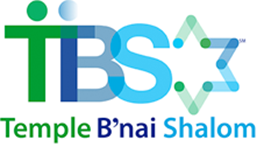What Comes Next (May 2021 KOL Article)
I haven’t yet settled on a terminology I really like about what comes next in our lives, individually and collectively, as we move forward from COVID. It isn’t possible to “return” to what came before the pandemic, as so much has changed. We aren’t “resuming” what we did before, either. The world of digital interaction has opened us to new ways of connection and I don’t think we’re “going back” to worship or learning that doesn’t have an online component in most cases. The idea that society (or congregations or people) will “bounce back” doesn’t seem quite right to me, as our heading has been inalterably changed. “Bounce forward” sounds a little funny. So if “return,” “resume,” “go back,” “bounce back,” or “bounce forward” don’t accurately describe what comes next, what term does?
In truth, while I care about accuracy in language, I care more about what we DO than what we call it. This, too, is unsettled. I see two key values at play in determining what our congregational life will look like in the next two, six, or twelve months. One is the idea of pikuach nefesh, the Jewish value of preserving or saving life. So precious is the gift of life we receive that safeguarding it is of highest importance. Just about any commandment in Torah can be violated in order to preserve life. Embracing this value means that we need to take precautions to ensure that our community stays as healthy and as safe as possible.
The other value is kehilah kedoshah, being a sacred community. Judaism is best lived in connection with others. We need other people, socially and spiritually. It’s hearing the shofar together, shoulder to shoulder, in the sanctuary. It’s schmoozing with old friends, and new, at Oneg Shabbat. It’s gathering for a shiva minyan in someone’s home or offering a mazel tov at an aufruf (wedding blessing). There’s a value in being proximate to one another, an intimacy of physical connection that can’t be replicated through screens (though we have tried and done as well as we can). Embracing this value means that we find ways to be in the physical presence of others for our congregational functions.
The philosopher, Dr. Ruth Chang, writes about making choices, particularly hard ones when our values are competing. It isn’t a question of right or wrong, she teaches, but recognizing that our choices offer us the opportunity to define who we are and who we will become. For me, it isn’t a question of picking between pikuach nefesh and kehilah kedoshah; it’s the opportunity to show how we do both. We want to be in-person with others in sacred community AND we want to do so safely with the utmost regard for everyone’s health and welfare. We want to be a congregation that lives both values.
So what will we do? It’s a question we have been working on every day since the pandemic began, with increased urgency in the past month. I don’t have definite answers for you yet, any more than I have a term I prefer to use. But I know we are beginning to have in-person events, with some already scheduled and more to come. And I know we are instituting health protocols and guidelines for those events, so that everyone can be healthy.
We don’t have to choose between our values. We are a kehilah kedoshah that safeguards life. In designing what comes next, we may frustrate some who would prioritize one over the other. But I am confident that we can chart our course successfully, bringing both values to life.
L’shalom,
Rabbi David S. Widzer
